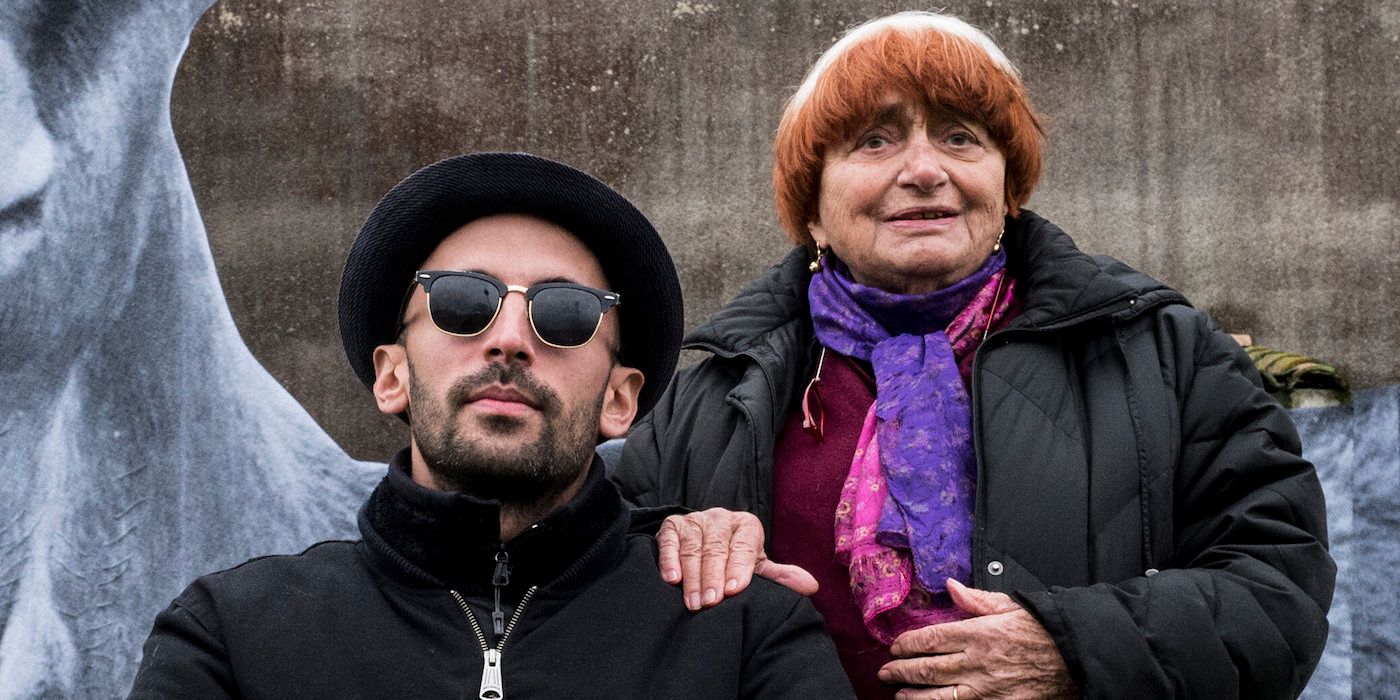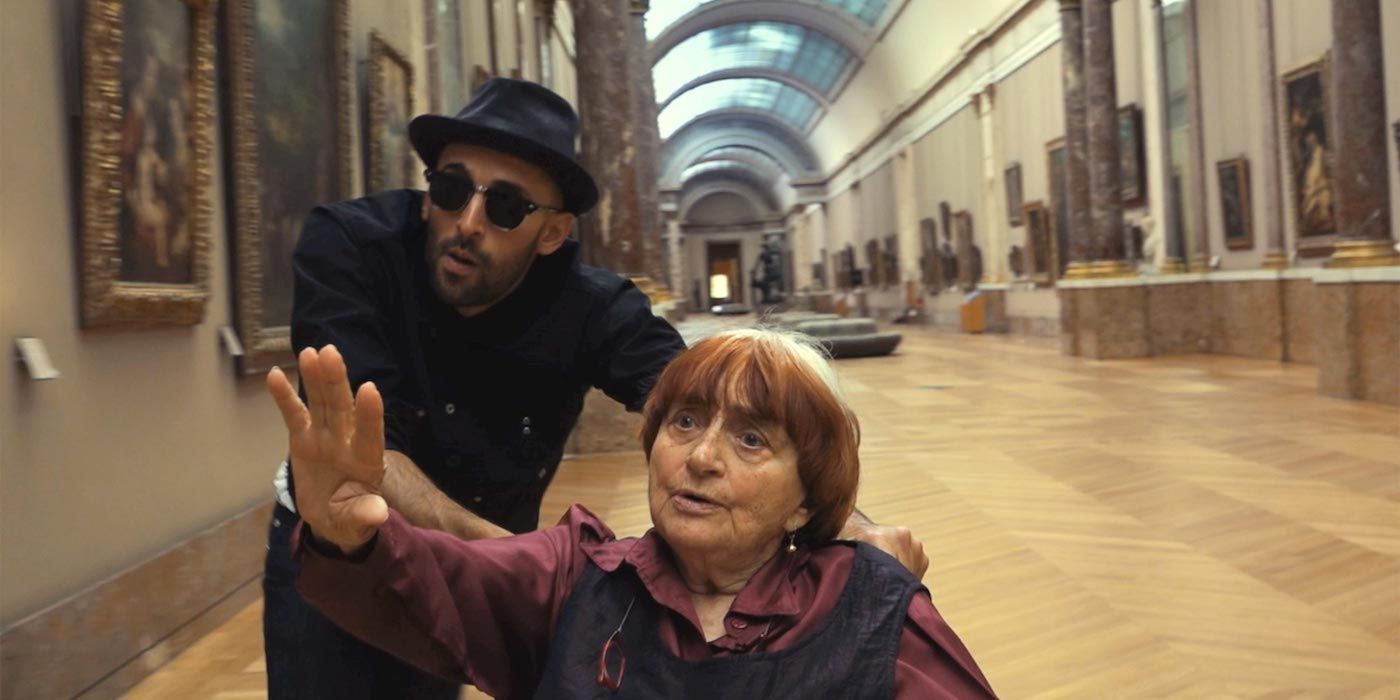At the age of eighty-eight, legendary French filmmaker Agnès Varda teamed up with the accomplished muralist and visual artist JR to cinematically chronicle their collaborative work across the French countryside. Focusing on their intimate yet expansive task of creating large portraits of local people and places across France, the Academy Award-nominated Faces Places breaks the documentary down to its most elemental level by positioning the persistence of personal experiences and historical memory at the forefront of the film. Rather than merely celebrating the accomplishments of iconic figures or mining obscure narratives for voyeuristic fascination, Faces Places prioritizes empathy for ordinary people as a method of cathartic visibility, illuminating working-class life through beautiful photographic murals and cinematic observation. From the creation of various murals to mundane life and ordinary people to JR and Varda’s meditations on fame, friendship, and mortality, Faces Places is a film essay full of transcendent truths that set it apart as one of the most important and inventive documentaries of the last ten years.
Although Faces Places primarily highlights the filmmakers’ interactions with the working-class populations of several French villages, the initial fictionalized reenactments of possible introductions between JR and Varda showcase the wide-eyed empathy that the directors employ throughout the film. By juxtaposing brief vignettes of possible encounters between Varda and JR in bus stops, discotheques, and other funny places before revealing the truth of how the two artists met, the filmmakers imbue the film with a playful and inviting tone, emphasizing the openness and approachability of the central duo. Between the various visits to small towns across the country in their camera-shaped Mercedes van, Varda and JR build upon their friendship with moments of memory-based connection on benches and in parks as well as visits to family members and old friends along their route, crafting a narrative of ageless camaraderie alongside the acts of communal portraiture that characterize the film. Even as the film dips into the bittersweetness of aging and the melancholy of miscommunication in the final act, Faces Places locates emotional vulnerability and personal connection at the forefront of the documentary form.
Beyond the beautiful vision of cross-generational friendship at the core of Faces Places, Varda’s glorious visualization of JR’s mural portraits establishes the film as a richly textured homage to everyday individuals. From the epic image of a farmer on the side of his barn to the group picture of scientists and engineers plastered on the walls of a salt factory, every mural functions as a monument to the monotonous, elevating local heroes and unsung groups of laborers through public displays of visual art for passersby to observe. In a particularly moving early sequence, Varda and JR create a massive close-up portrait emblazoned on the home of a woman named Jeanine, who is the sole remaining inhabitant in a row of mining houses. When Jeanine sees her face on the front of her home for the first time, the camera lingers on her as she cries tears of joy and is overwhelmed at the sight, emphasizing the success of JR and Varda’s attempts to see people in the fullness of their personal expression and emotional worth. On the other hand, when a young restaurant worker expresses her discomfort regarding the mural that JR and Varda created with her image, Varda consoles her with an empathetic apology, highlighting the filmmakers’ desire to place the value of personal identity above their own artistic endeavors.
Perhaps the most powerful irony at the center of Faces Places comes in the form of Varda’s slowly worsening eyesight, as the film meditates on her desire to see and photograph as many people and places as possible before going blind. By including sequences of her own medical procedures as well as volunteering her own eyes as the subjects for JR’s murals on two train cars, Varda matches the vulnerability and humility of the film’s other subjects to highlight her own humanity, immortalizing her own emotional experience through cinematic expression. Regardless, Varda refuses to allow her physical ailments to slow her down or prevent her from connecting with communities beyond her home on Rue Daguerre in Paris, adding an extra layer of genuine care and kindness to her collaborations with JR. For example, when JR and Varda stumble upon a crumbling cliffside bunker from World War II on the beaches of Normandy, the two artists plan a memorial to one of Varda’s close friends, adapting a photo that Varda took in the mid-1950s as a mural to a moment of personal value in Varda’s own life. Even in representing her own reflection on memory and mortality, Varda places others before herself, emphasizing the unmatched selflessness that permeates her filmography.
Although Varda’s final film, the meta-retrospective Varda by Agnès, provided a sense of career closure for the artist two years after Faces Places, the co-production between Varda and JR feels like the perfect conclusion to a career built upon empathy-driven narratives and cinematic portraiture. When JR takes Varda to visit the grave of legendary photographer Henri Cartier-Bresson, the visual artist asks the aging filmmaker about her own mortality, providing her space to reflect on her own life and death. Replying with the simple statement “I do not fear death… Because when it is over, that will be that,” Varda encapsulates the emotional beauty of her work with JR on Faces Places, gesturing toward the importance of cherishing memories and celebrating the seeming normalcy of everyday existence. From crafting horizontal murals of village dwellers munching on an incredibly long baguette to pasting cascading portraits of women on the shipping crates that they work to fill, JR and Varda built murals to the mundane to be shared and treasured by a wide international audience, both onscreen and in person for as long as they last. Especially after Varda’s passing in 2019 at the age of 90, Faces Places remains a great expression of empathy and human kindness, transcending the bounds of documentary storytelling to craft a celluloid collage of human celebration.


